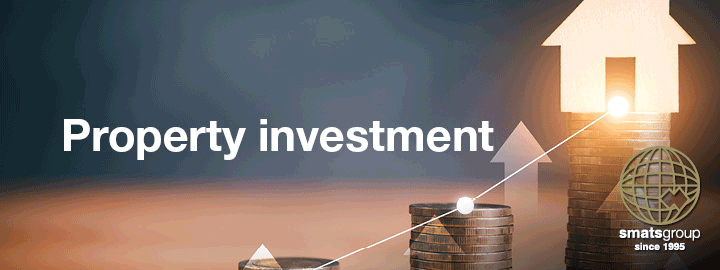Renters still have it tough but glimmer of hope emerges
It has been a tough few years for those grinding their way through an extended rental crisis but vacancy rates are easing from record lows and rents are no longer soaring at the rate they had been.
Rental vacancy rates are finally easing from their record lows, with the combined capitals marking their first annual increase since March 2021.
PropTrack data released Friday (12 July) showed that national rental vacancy rate rose 0.09 percentage points (ppt) to sit at 1.42 per cent in June as conditions eased in all national markets except the Northern Territory and regional Western Australia.
This marks the fourth consecutive month of increasing vacancy, rising from a record low of 1.09 per cent in February to 1.42 per cent in June, with the national rental vacancy rate at its highest level since June 2023 bringing some relief for renters.
Eleanor Creagh, Senior Economist, PropTrack, said a return of property investors to the market was contributing to the gradual alleviation of what remains a rental crisis.
“Part of the increase in rental vacancy rates is likely stemming from the uplift in investor activity, alongside a seasonal slowing in rental demand and moderation in net overseas migration,” she said.
“Home prices have cycled through 18 consecutive months of growth and the prospect of capital gains has lured investors to the market, supported by strong rental price growth which is rebuilding rental yields.
“The value of new lending to investors, excluding refinancing, increased 29.5 per cent in May according to the Australia Bureau of Statistics (ABS). The number of loans to investors has also consistently increased so far this year.
“Increasing investor activity adds to the pool of long-term rentals, helping to ease rental market constraints and the chronic shortage of rental supply that has fuelled strong rental price growth and record high rents.
“Google searches for ‘investment property’ have also consistently risen from lows seen through the pandemic period when investor interest in Australian property had suffered a period of decline.
“The engagement suggests a continued lift in activity from investors in the months ahead.”
Although the uplift in investor activity and easing in rental vacancy brings welcome relief for renters, rental vacancy rates remain below 2 per cent in every capital city – far from balanced conditions.
“And despite the recent easing in vacancy rates, rental markets are likely to remain undersupplied with building activity remaining at decade low levels,” Ms Creagh said.
Investors now account for nearly 36 per cent of new home loans — the highest proportion since 2018.
Rent rises abating
Renters are finally seeing some relief, with most major cities experiencing rent price declines or increases at a slower pace.
Domain’s June Quarter Rent Report revealed that for house rents, it was weakest June quarter since 2021 in Sydney and Melbourne, and since 2020 in Brisbane, Adelaide and Perth.
For unit rents, it was the weakest since 2021 in Sydney, Melbourne and Brisbane, since 2020 in Canberra, and since 2018 in Perth.
Domain’s Chief of Research and Economics, Dr Nicola Powell, said the signs were looking better for embattled renters.
“Looking ahead, Australia’s rental market will continue to be more balanced, driven by several factors.
“Firstly, rental growth is slowing in line with a gradual increase in rental availability which will lead to a rebalancing of supply and demand pressures.
“Secondly, rental demand is easing, as the number of prospective tenants per rental listing has consistently fallen throughout 2024.
“This aligns with overseas migration passing a peak and it’s expected to decline further in the year ahead. This trend will continue to ease demand, supported by the federal government-introduced migration strategy aimed at slowing population growth.
“Thirdly, increased first-home ownership is imminent, supported by initiatives like Queensland’s doubled first-home buyer grant, the federal Help to Buy shared equity scheme, and revised stamp duty concessions in ACT, South Australia, Western Australia, and Queensland.
“These measures aim to facilitate home ownership transitions and improve affordability, further alleviating rental conditions in Australia.”
But renters won’t be rushing out on a spending spree any time soon.
Over the past year the growth rate in capital city unit rents has come down from 15.1 per cent to 7.6 per cent, with the biggest slowdowns in major capitals Sydney, Melbourne and Brisbane.
CoreLogic Head of Research Australia, Eliza Owen, said that although rents have not actually declined year-on-year, there is a clear slowing in the pace of annual growth across the large inner city unit markets of Sydney, Melbourne and Brisbane.
“This likely reflects an easing in demand, with apartment rental growth not sustaining a strong rate as last year and comes amid early signs of easing net overseas migration, which according to ABS data peaked in the March quarter of 2023.
“In Sydney, the annual rate of growth for unit rents fell a whopping 10 percentage points to 7.1 per cent.
“Melbourne unit rents dropped 7.4 percentage points in the past year to 7.5 per cent, and annual growth in Brisbane unit rents slowed from 15.3 per cent this time last year to 8.5 per cent in the past 12 months.”
Unit rent
WA renters were buoyed by news from Consumer Protection on Thursday (11 July) that rent increases were to be limited to once every 12 months, from the previous six months, while pets would be allowed unless there were extenuating circumstances. The measures take effect on 29 July.
























